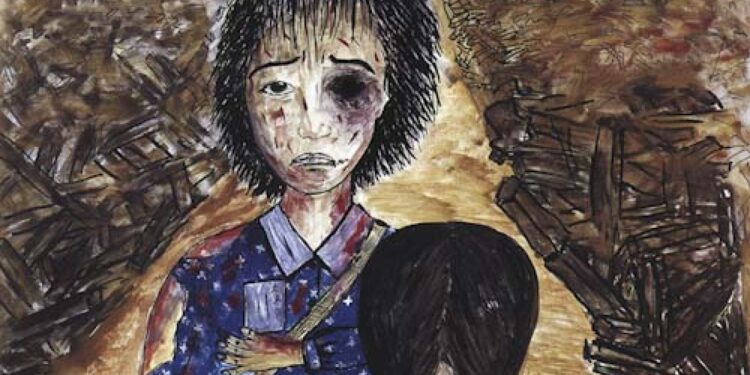![Reprinted with permission of the Japanese Broadcasting Corporation [NHK], which has made this collection available to the public. Reprinted with permission of the Japanese Broadcasting Corporation [NHK], which has made this collection available to the public.](https://cdn.psychologytoday.com/sites/default/files/styles/article-inline-half-caption/public/field_blog_entry_images/2020-08/1631-75060.jpg?itok=dFC44iSI)
From the gathering of “Unforgettable Hearth.” Paintings by a survivor of the bombing.
Supply: Reprinted with permission of the Japanese Broadcasting Company [NHK], which has made this assortment accessible to the general public.
Greater than seven a long time have handed because the dropping of the bombs on Hiroshima and Nagasaki; right this moment marks the seventy fifth anniversary of the occasions that modified the historical past of recent battle. The annual peace ceremony held in remembrance of the bombings of the 2 cities has been scaled again this yr due to the coronavirus. Survivors who can nonetheless inform the story of those occasions is rapidly dwindling—their common age is about 83. In the meantime many countries have bolstered or maintained their nuclear arsenals, and their very own authorities refuses to signal a nuclear weapons ban treaty.
“A-Bomb” survivors’ drawings and work proceed to show us about atrocity, empathy, and in the end, humanity. Like many individuals of my era, I learn in regards to the bombings as a part of a historical past or political science class protecting WWII. It wasn’t till the primary yr I labored as an artwork therapist once I traveled to see an exhibit of drawings and work by survivors of Hiroshima and Nagasaki that I lastly started to know the impression of those occasions. These drawings and work without end modified what I believed I knew about trauma and battle.
A set of photos emerged as a result of a single particular person’s coming ahead to recall the horror of the bombing a few years after the precise occasion passed off. In 1974, 77-year-old Mr. Iwakichi Kobayashi walked right into a tv station in Japan with a portray of what he recalled about August sixth, 1945. The picture was his memory of seeing individuals burned by the atomic bomb dropped on Hiroshima that day. Consequently, the tv station determined to place out a name for drawings by survivors of the Hiroshima and Nagasaki bombings to “draw an image of the A-Bomb.”
What adopted was completely surprising. Greater than 2000 drawings and work had been submitted to the station. Half had been despatched by mail; the rest of the pictures had been delivered to the station by the survivors, who arrived over the subsequent two years as if on long-awaited pilgrimages. The drawings and work had been created on the backs of calendars, paper utilized in sliding doorways, and sheets torn from notebooks. Nearly all of the pictures included written explanations, typically on the images themselves.
This assortment of now-famous drawings and work by “Hibakusha” (A-Bomb survivors) is now housed within the Peace Memorial Museum and items from the gathering kind a touring exhibition once in a while. Additionally they are the topic of a ebook, Unforgettable Hearth: Footage Drawn by Atomic Bomb Survivors, an account of what occurred and a listing of photos of the mushroom cloud and aftermath of fireside, black rain, and radiation.
Whereas the pictures made by survivors of Hiroshima and Nagasaki every seize a distinct second in time, additionally they mirror the person and collective “felt” reminiscences of artifical catastrophe. It’s a gorgeous instance of how implicit reminiscence—also referred to as sensory reminiscence—remains to be current in trauma survivors even a long time after direct publicity to battle, terrorism, or catastrophe. It solely took Mr. Kobayashi’s single portray and a request to those that had been till then silent to supply the catalyst for a torrent of visible reminiscences and nightmarish narratives to emerge. These tales remained untold for near 30 years, materializing as vividly as if the occasions depicted occurred solely moments in the past.
Viewing these photos makes it unimaginable to disconnect ourselves from the ache, torment, and distress lengthy after the occasions and the artists have died. We nonetheless don’t fully perceive why we people are compelled to make photos and inform tales in response to horror and atrocity. However we do have residing proof of this within the artwork expressions by the Hibakusha—when trauma occurs, individuals categorical what the thoughts and physique by no means actually overlook.
The ebook Unforgettable Hearth is now accessible to be seen on-line and might be downloaded at no cost to lift consciousness of the human aspect of the tragedies and the continued want for nuclear disarmament. You can download your own copy at this link.
Source link













